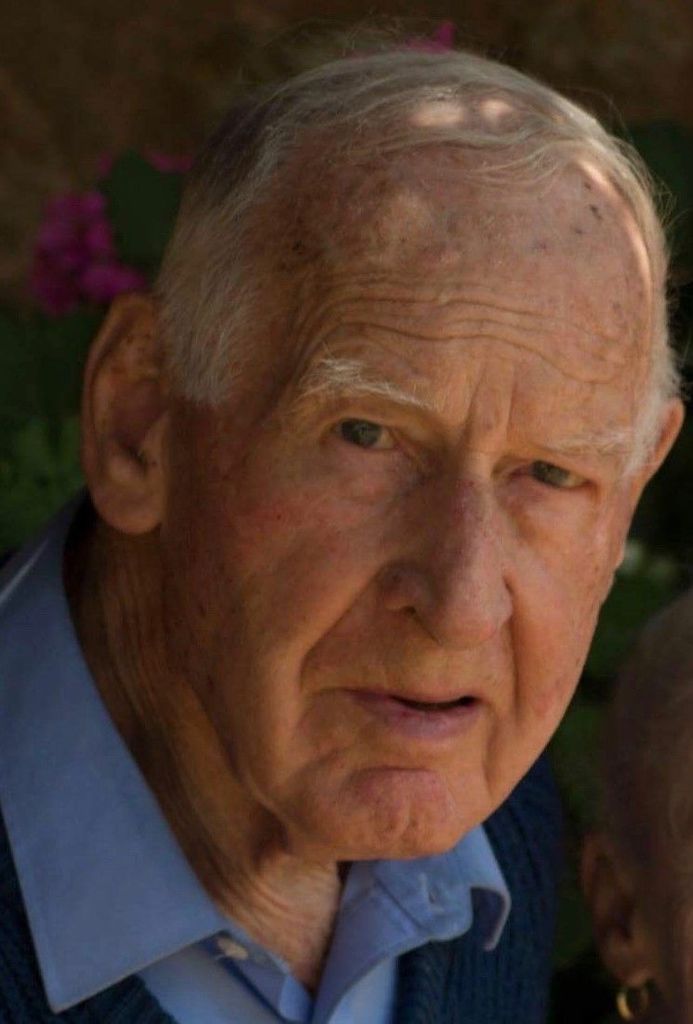

1928
Leyland
2020
Leyland Hugh Sackett
August 13, 1928 — April 12, 2020
Leyland Hugh Sackett, archaeologist and teacher at Groton School, died in Groton, MA, on April 12, 2020, at the age of 91.
Born 1928 in Oxford, U.K., son of Dorothy Eleanor Salter and Alfred Barrett Sackett, he was educated at Kingswood School in Bath, where his father was headmaster, and at Oxford University (Merton College) where he earned a Lit.Hum. and Dip.Ed in 1954. Known as Hugh, he led a rich life with two concurrent careers, teaching classics (Latin and Ancient Greek) and archaeology at Groton School for more than 60 years as well as conducting field work and study throughout Greece with the British School at Athens.
An international authority on Bronze Age Greece, he worked at Knossos, Mycenae and Sparta and is best known for leading excavations at Lefkandi and Palaikastro, Crete, having published landmark articles and books for both these sites. An article published in 2009 in relation to an exhibit celebrating his career noted, "In addition to being respected for his meticulous scholarship and long list of publications, Mr. Sackett enjoyed a reputation among his colleagues as an archaeological divining rod. Long before there were infrared aerial photographs, Mr. Sackett's uncanny instinct for identifying locations that would appeal to ancient peoples, would prompt him to say "dig here," and, sure enough, artifacts and stone foundations would begin to appear, long hidden beneath the surface of the earth." At Lefkandi, Mr. Sackett and his colleagues unearthed an intact clay centaur of remarkable craftsmanship and design. At the excavations in Palaikasto, Mr. Sackett's team found pieces of what turned out to be the largest chryselephantine (gold and ivory) statuette yet recovered from the antique world, known as the Palaikasto Kouros. The body of the statuette, carved from hippopotamus tooth, shows extraordinary anatomical detail even though it dates to about 1450 B.C.E. In 2014, Sackett was awarded the Gold Medal for Distinguished Archaeological Achievement by the Archaeological Institute of America, the first British archaeologist to receive this award.
He was the longest-serving faculty member at Groton School, in Groton, MA, which created the Hugh Sackett Visiting Scholar Fellowship in his honor. Many of his students went on to become classicists and archaeologists including: Sean Hemingway, the head of Greek and Roman Art at the Metropolitan Museum in New York; Dr. Jennifer Stager, a professor of art history at Johns Hopkins; Dr. Andres Reyes, now a faculty member of Groton School. He is survived by his wife Eleanor Childs Davis, his step-children R. Townsend Davis, Jr., Henry P. Davis and Ruth Davis Konigsberg, his brother Robert Anthony Sackett of Bath, England, and many beloved nieces and nephews.
A memorial service will be held at a later date.
Born 1928 in Oxford, U.K., son of Dorothy Eleanor Salter and Alfred Barrett Sackett, he was educated at Kingswood School in Bath, where his father was headmaster, and at Oxford University (Merton College) where he earned a Lit.Hum. and Dip.Ed in 1954. Known as Hugh, he led a rich life with two concurrent careers, teaching classics (Latin and Ancient Greek) and archaeology at Groton School for more than 60 years as well as conducting field work and study throughout Greece with the British School at Athens.
An international authority on Bronze Age Greece, he worked at Knossos, Mycenae and Sparta and is best known for leading excavations at Lefkandi and Palaikastro, Crete, having published landmark articles and books for both these sites. An article published in 2009 in relation to an exhibit celebrating his career noted, "In addition to being respected for his meticulous scholarship and long list of publications, Mr. Sackett enjoyed a reputation among his colleagues as an archaeological divining rod. Long before there were infrared aerial photographs, Mr. Sackett's uncanny instinct for identifying locations that would appeal to ancient peoples, would prompt him to say "dig here," and, sure enough, artifacts and stone foundations would begin to appear, long hidden beneath the surface of the earth." At Lefkandi, Mr. Sackett and his colleagues unearthed an intact clay centaur of remarkable craftsmanship and design. At the excavations in Palaikasto, Mr. Sackett's team found pieces of what turned out to be the largest chryselephantine (gold and ivory) statuette yet recovered from the antique world, known as the Palaikasto Kouros. The body of the statuette, carved from hippopotamus tooth, shows extraordinary anatomical detail even though it dates to about 1450 B.C.E. In 2014, Sackett was awarded the Gold Medal for Distinguished Archaeological Achievement by the Archaeological Institute of America, the first British archaeologist to receive this award.
He was the longest-serving faculty member at Groton School, in Groton, MA, which created the Hugh Sackett Visiting Scholar Fellowship in his honor. Many of his students went on to become classicists and archaeologists including: Sean Hemingway, the head of Greek and Roman Art at the Metropolitan Museum in New York; Dr. Jennifer Stager, a professor of art history at Johns Hopkins; Dr. Andres Reyes, now a faculty member of Groton School. He is survived by his wife Eleanor Childs Davis, his step-children R. Townsend Davis, Jr., Henry P. Davis and Ruth Davis Konigsberg, his brother Robert Anthony Sackett of Bath, England, and many beloved nieces and nephews.
A memorial service will be held at a later date.
Guestbook
Visits: 98
This site is protected by reCAPTCHA and the
Google Privacy Policy and Terms of Service apply.
Service map data © OpenStreetMap contributors
